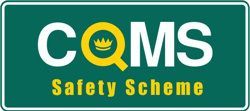Plans to cut air pollution and unsafe conditions for pedestrians and cyclists around schools are being shared across the UK by Hackney Council. The aim is to help other councils to replicate its successful School Streets scheme by taking them step-by-step through the process.
The London borough Council launched its toolkit earlier this summer in a bid to assist other councils to ban traffic outside schools at the beginning and end of the school day. The free guide, known as the School Streets toolkit, is designed to give practical advice to local authorities to reduce the number of cars outside schools.
What is the School Streets Scheme?
Also referred to as Healthy School Streets and School Car-Free Zones, the scheme was developed in Italy, and has been adopted in the UK by Hackney, Solihull, Camden and Edinburgh.
School Streets limits the number of vehicles outside the school gates through the implementation of traffic time restrictions. The impact of this to ease congestion, poor air quality and road safety concerns.
Hackney Council introduced the scheme in 2017 and currently has 7 schools taking part, with 3 made permanent so far. By 2022, the Council hopes to implement 17 School Streets, covering a third of primary schools in the borough.
How Does it Work?
In conversation with local schools and through reviewing air quality and traffic data, among other considerations, the council selects a number of schools where Healthy School Streets will be implemented.
An Experimental Traffic Management Order (ETMO) is then imposed outside the school at the start and end of the school day, prohibiting motor traffic access. ETMOs grant councils greater flexibility to modify or revoke the Order earlier than a permanent TMO, and are ideal for trialling schemes such as Healthy School Streets. Permits are issued to drivers who are permitted to access the street during these hours, such as residents or Blue Badge holders.
A site visit is then conducted to collect baseline data and identify scheme specifics such as new 'Park and Stride' drop-off points and locations for signage.
Due to the flexibility of ETMOs, consultation on the scheme can be held before or after its implementation. In Hackney, local residents were consulted prior to the implementation of the Healthy School Streets, but in Solihull, the scheme was implemented first and people were able to experience its effects before making representations.
The success of a Healthy School Streets scheme long-term is dependent on ongoing reviewing, enforcement, and community engagement. The schemes can be costly to implement, but some can be made back through penalty charges for drivers who break the ETMO.
What are the Benefits of Banning Traffic Outside of Schools?
Reducing the number of vehicles outside of school at drop off and pick up times, will:
- Remove idling cars near schools, improving air quality at the school gates
- Reduce the risk of respiratory disease, lung cancer, coronary heart disease, and stroke through a reduction in air pollution
- Discourage speeding vehicles on the road at times when large numbers of children are entering or leaving the school premises
- Make it easier for children and parents to walk and cycle to school
Does Banning Traffic Outside of Schools Really Make a Difference?
Since introducing School Streets, Hackney Council has seen an increase of more than 50% of children cycling to participating schools. In addition, the Council reports that traffic outside the schools has also been reduced by around 70%.
Cllr Feryal Demirci, Deputy Mayor of Hackney and Cabinet Member for Health, Social Care, Transport and Parks says, “Our pioneering School Streets have been incredibly successful so far, with widespread support from children, parents, teachers and local people.
They also go so much further than simply banning idling outside schools - they make the streets outside places for everyone, tackle poor air quality, and tackle the obesity crisis by making it easier for kids to walk or cycle to school.”
By sharing their School Streets toolkit, Hackney Council hopes to inspire more schools to try this approach and ultimately transform the way that children travel to school.
For more information on this topic, please contact George Stow on 01483 745441 or gstow@mayerbrown.co.uk.







